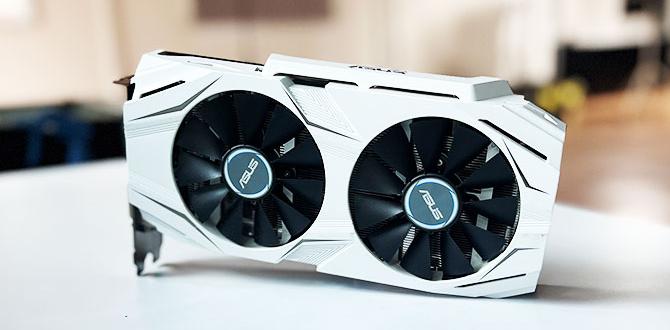USB Serial Driver: Effortless Win 10 Fix
Encountering a “USB Serial Driver” issue on your Windows 10 machine can be a frustrating roadblock, often halting communication between your computer and various essential devices. Whether you’re trying to connect a development board, a gaming controller, a printer, or even some older diagnostic tools, a missing or corrupted USB serial controller driver for Windows 10 can render them useless. Fortunately, rectifying this common problem is often a straightforward process and can be achieved with a few simple steps, restoring functionality and getting your peripherals back online.
The core of the issue lies in how Windows 10 interacts with hardware. For devices that communicate using a serial port interface, even when connected via USB, a specific driver is required. This driver acts as a translator, allowing the operating system to understand and control the data flow to and from the connected hardware. When this communication link is broken, you’ll typically see an error message in Device Manager, often indicating an “Unknown device” or a device with a yellow exclamation mark, pointing to a driver problem.
Troubleshooting Your USB Serial Controller Driver for Windows 10
The most common and often successful approach to fixing a missing or faulty USB serial driver for Windows 10 involves Windows’ built-in troubleshooting tools and manual driver updates. Let’s break down the process:
1. Identify the Problematic Device
The first step is to pinpoint exactly which device is causing the trouble.
Open Device Manager: Press `Windows Key + X` and select “Device Manager” from the menu. Alternatively, search for “Device Manager” in the Windows search bar.
Locate the Unknown Device: Look for any devices with a yellow exclamation mark next to them, or under categories like “Other devices” or “Ports (COM & LPT).” These are your prime suspects. Often, the device name will give a clue, such as “USB Serial Port,” “USB Serial Controller,” or something similar.
2. Windows Update: The First Line of Defense
Windows 10 is generally quite good at automatically detecting hardware and installing appropriate drivers.
Run Windows Update: Go to `Settings > Update & Security > Windows Update` and click “Check for updates.” Sometimes, the necessary driver might be bundled with a pending Windows update. Allow the update to download and install, and then restart your computer.
3. Manual Driver Update via Device Manager
If Windows Update doesn’t resolve the issue, you can try manually updating the driver.
Right-click the problematic device in Device Manager.
Select “Update driver.”
Choose “Search automatically for drivers.” Windows will then search your computer and the internet for the best available driver. If it finds one, follow the on-screen prompts to install it.
4. Manually Installing a Driver from the Manufacturer
In many cases, the best and most reliable USB serial driver for Windows 10 will come directly from the hardware manufacturer.
Identify the Manufacturer: If you know the specific device you’re trying to connect (e.g., an Arduino board, a specific USB-to-serial adapter), visit the manufacturer’s website.
Navigate to the Support/Downloads Section: Look for a “Support,” “Downloads,” or “Drivers” section on their website.
Search for Your Device: Find the specific model of your device.
Download the Windows 10 Driver: Download the driver package, ensuring it’s specifically for Windows 10. It might be an executable file (.exe) or a zip archive containing driver files (.inf, .sys, etc.).
Install the Driver:
If it’s an .exe, run the file and follow the installation wizard.
If it’s a zip file, extract the contents. Then, go back to Device Manager, right-click your problematic device, select “Update driver,” and this time choose “Browse my computer for drivers.” Navigate to the folder where you extracted the driver files and select it. Windows should then install the correct driver.
5. Rolling Back a Driver
If the issue started after a recent driver update, you might consider rolling back to a previous version.
In Device Manager, right-click the problematic device and select “Properties.”
Go to the “Driver” tab.
If the “Roll Back Driver” button is available, click it and follow the prompts.
6. Uninstalling and Reinstalling the Device
Sometimes, a clean slate is all that’s needed.
In Device Manager, right-click the problematic device and select “Uninstall device.”
Check the box that says “Delete the driver software for this device” if prompted.
Click “Uninstall.”
Restart your computer. Windows will typically try to re-detect the device upon startup and reinstall the driver automatically.
Understanding COM Ports
When a USB serial driver is successfully installed, the device will usually be assigned a COM port (e.g., COM1, COM3, COM10). This COM port number is crucial for most applications that communicate with serial devices. You can find the assigned COM port by looking at the device’s properties in Device Manager once the driver is installed.
When to Seek Further Help
While these steps cover the majority of USB serial driver issues on Windows 10, there are rare instances where a hardware fault might be the cause. If, after meticulously following these troubleshooting steps and attempting to install drivers from the manufacturer, the device remains unrecognized or exhibits persistent errors, it’s possible the hardware itself is defective.
Fixing USB serial driver problems on Windows 10 doesn’t have to be a complex endeavor. By systematically working through these steps, from utilizing Windows’ automated tools to manually sourcing drivers from manufacturers, you can efficiently resolve these connectivity issues and get your devices working as they should. The key is patience and a methodical approach to identifying and resolving the driver conflict.


